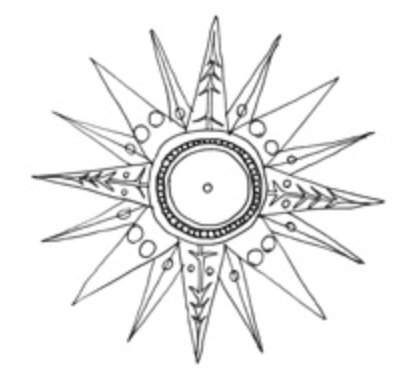*For a simple and efficient tool to help you find harmonics and multiphonics, download the new CELLO MAP APP
There are several effective ways of producing multiple sounds on the cello or giving the impression of a complex tone. These sounds are often also present in multiphonics or are strongly related to them. Several of these effects can take place simultaneously, which, in terms of analysis and nomenclature, can cause confusion, but offers many rich musical possibilities.
Overpressure Harmonics and Fluttering Multiple Sounds
By increasing bow pressure when playing a harmonic, it is possible to incorporate the open string into the sound. For medium-high pressures, overpressure harmonics can be fairly pure-sounding; but, for high pressures, the sound of the harmonic and the open string are grainy and distorted. It is relatively easy to produce overpressure harmonics that combine every possible harmonic with the open string. In the following video, overpressure enables the open string to sound alongside a harmonic.
It is easier to produce a relatively clean overpressure sound when playing slightly more sul tasto than usual.
For harmonics in high positions, it is easy to achieve this multiple sound effect by playing with the bow behind the LH finger (i.e., bow between LH and nut), as demonstrated in the following video.
In this case it is also possible to perform a glissando between adjacent harmonics. In the following video I demonstrate this. I firstly play the harmonic glissando with normal pressure so that the pitches can be identified amongst the distortion in the overpressure method that follows.
Overpressure harmonics are also producible for artificial harmonics. In this case, the stopped pitch of the left-hand finger/thumb is heard instead of the open string.
If the LH finger covers several harmonic nodes, even slight overpressure with the bow causes a ‘fluttering’ multiple sound where several harmonics are heard in succession as part of a distortion with a fairly strong open string component. This is easily obtainable for finger positions close to the nut, as shown in the video below.
Half harmonics
Half harmonics occur when the string is depressed by the left-hand finger somewhere between normal, stopped pressure and harmonic pressure. The sound is a mixture of the stopped string pitch, the harmonic pitch, and a resistant, slightly noisy quality. The stopped-string pitch is often also present in multiphonics.
The balance between the loudness of the stopped-string pitch and the harmonic pitch depends on how far the string is depressed. In theory, we could describe quarter, half, three quarter…etc., harmonics where the proportion of harmonic sound relative to stopped-string pitch increases as finger pressure lightens. In fact, even under normal harmonic pressure, the stopped-string pitch is often present; it is simply usually unnoticed. However, if a normal harmonic is played at several alternative nodal positions, each with a different stopped-string pitch, the listener can easily track the changing pitch of the stopped-string tone as a shadow melody. This is described in more detail in the ‘Harmonics’ section of CelloMap.
The following video shows some examples of half harmonics. As I change the pressure of the LH finger, the harmonic becomes more/less present. The video demonstrates this effect for the 6th harmonic on the C-string (stopped pitch ~ E-flat), the multiphonic III [3+8+13+5] on the G-string (stopped pitch ~ D-sharp), the 5th harmonic on the D-string (stopped pitch ~ B) and the 4th harmonic on the A-string (stopped pitch ~ D).
Sul Ponticello Multiple Sounds
A multiphonic-like effect is produced when playing close to the bridge. The harmonic partials of a tone, which are usually heard as a homogenous, single pitch are heard as a cluster of two or more pitches. These are always harmonics of the fundamental (open or stopped string) pitch. Which harmonics sound depends on bow speed and pressure and point of contact. The faster and lighter the bow stroke, and the closer it is to the bridge, the higher the harmonics that take part in the sound. Changing these factors individually can also have enough impact to produce a split tone, for example, by bowing close to the fingerboard with a very light bow stroke. A vast spectrum of sound possibilities is available for combinations of bow speed/pressure and contact point.
In the following video I make changes to bow pressure and contact point to vary the colour and harmonic components of sul ponticello multiple sounds.
Another important element of sul ponticello timbre is the sound of the bow stroking the bridge. This also has a pitch; fairly high, which is perceived as a noisy, sibilant sound. The sound of the bow stroking the strings during normal arco technique is also pitched. It is more noticeable as a component of overall sound when high-pitched, quiet tones are played. Both of these stroking sounds can be emphasised by bowing with a fast bow speed and/or at a slight angle. These sounds can give a strong impression of complexity and multiplicity that is just as rich as that of ‘pure’ multiphonics and, indeed, often plays an important role in the sound quality of multiphonics. These sounds are particularly useful for transitions between two different multiphonics or between multiphonics and harmonics or stopped string pitch, and also in tremoli, trills and double stops. There are many rich possibilities open to performers and composers.


